36 Different Types of Plumbing Valve
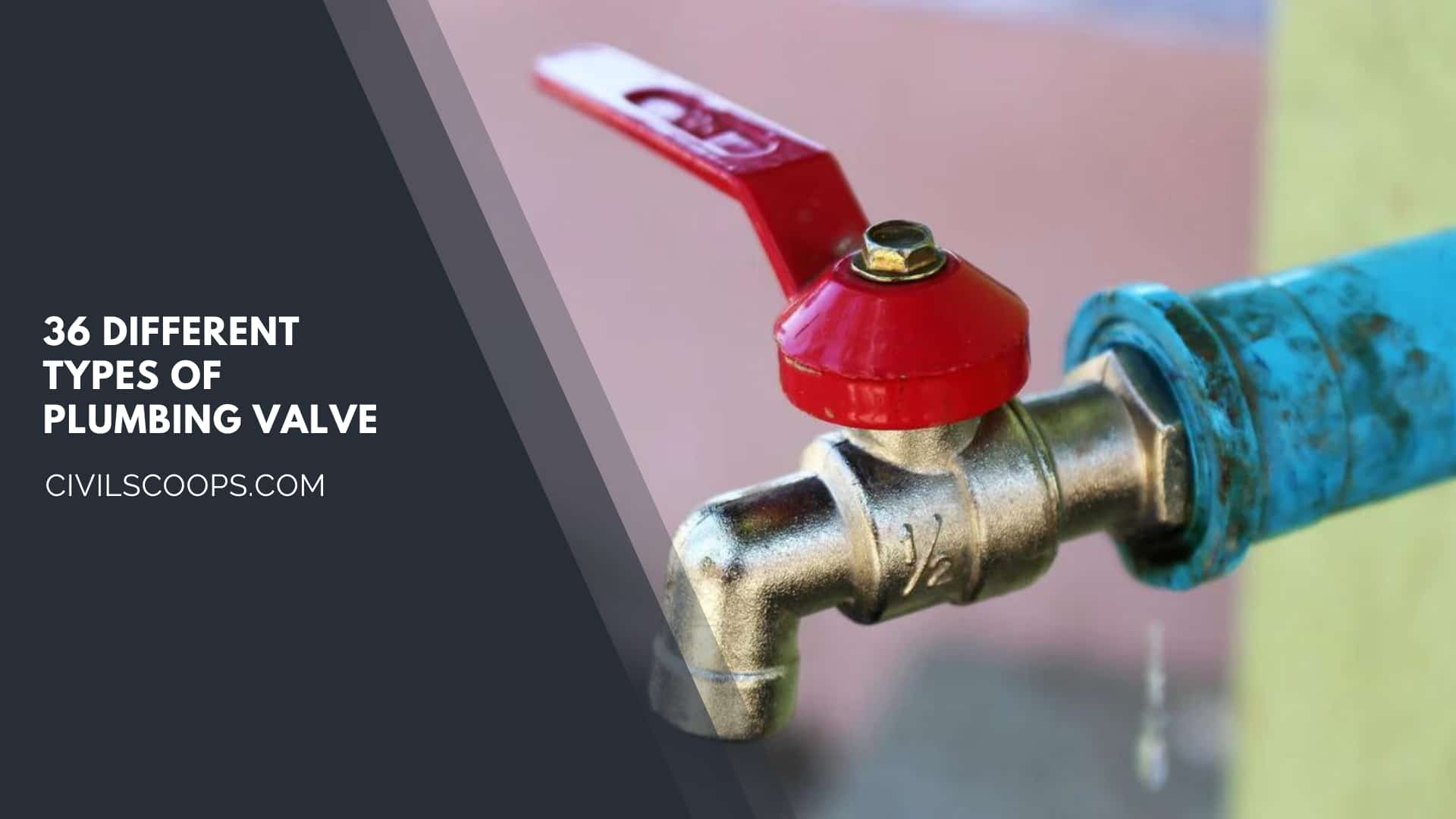
Table of Contents
Plumbing Valve
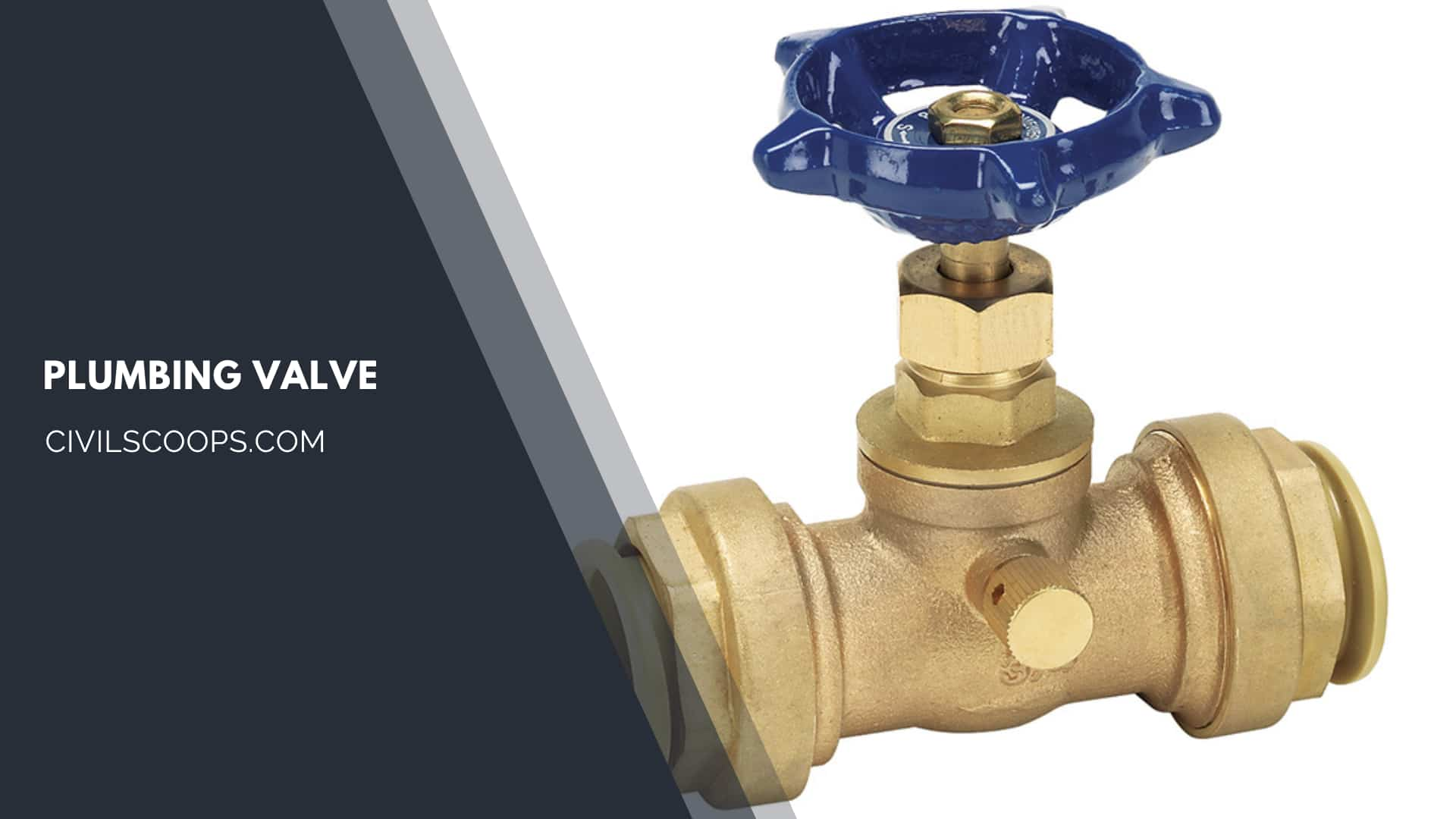
A plumbing valve is a system that is installed in the plumbing system. Plumbing is generally defined as the system where we need to install pipes and other required works to fix the drainage system.
What Is Plumbing Valve?

A plumbing valve is a type of valve which is installed in the pipeline. A plumbing valve operates or directs the flow of water or liquid by closing, opening, or partially closing. The valve operates the liquid pressure by closing or opening. So, the plumbing valve controls the flow and pressure of the liquid.
Also Read: What Is Sunken Slab | Advantages & Disadvantages Sunken Slab
Types of Valves in Plumbing
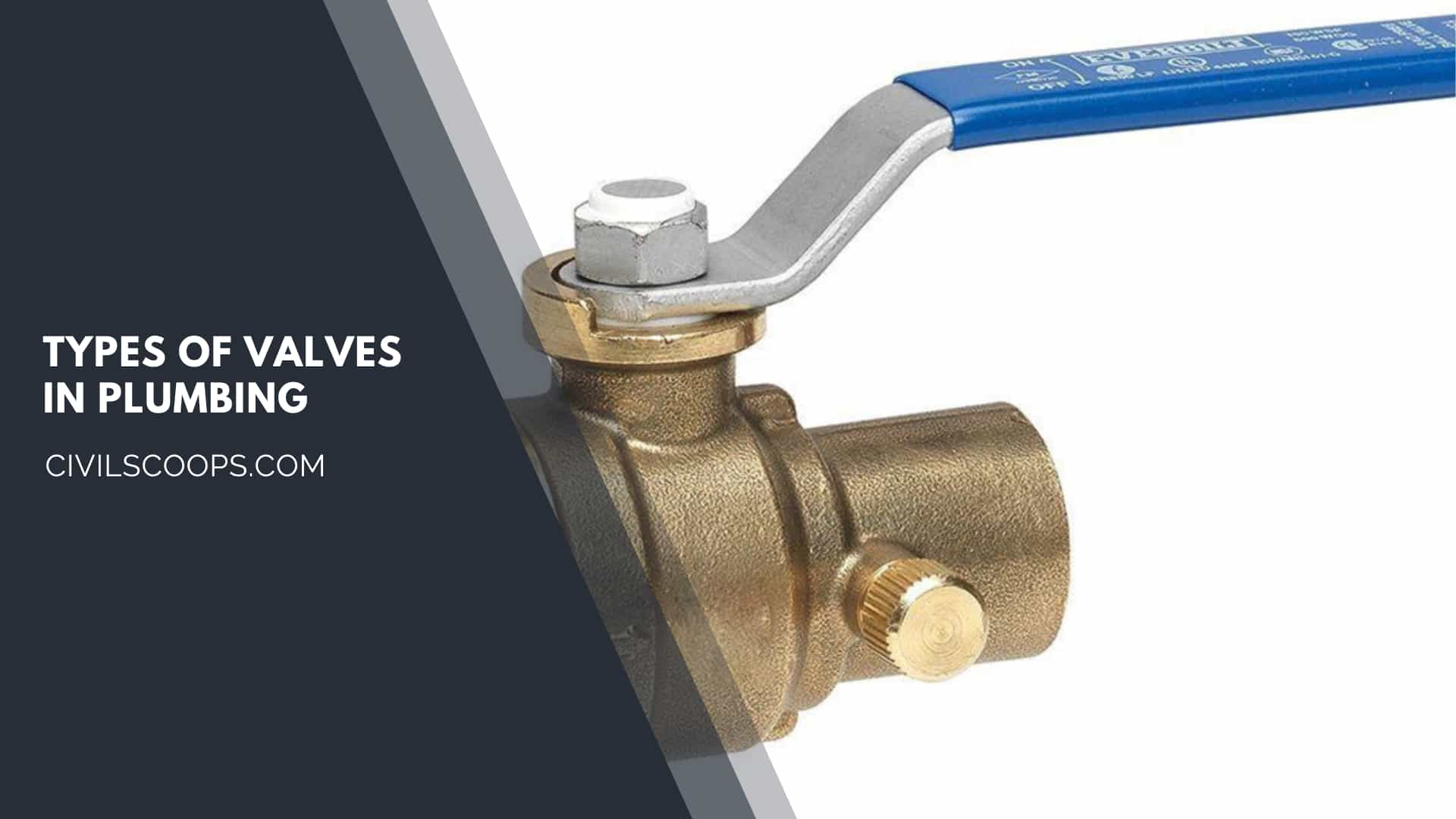
Different types of valves are used in plumbing according to their requirements. The cost of a plumbing valve is near about 20 to 30% of the total piping cost. The cost of a plumbing valve varies from one place to another because of different prices of materials.
There are generally 9 types of plumbing valves used in the plumbing system, those are the following below-
- Gate valve
- Globe valve
- Check valve
- Plug valve
- Ball valve
- Butterfly valve
- Needle valve
- Pinch valve
- Pressure relief valve
1. Gate Valve

Linear motion is the mechanism of the gate valve by which we can start or stop the flow of the fluid. During the process plant gate valve is generally used.
At the time of fully opening of gate valve, the dist valve of a gate valve is totally opened and there is no resistance, and water can flow without any resistance.
When the gate valve is fully opened then there is almost negligible pressure and if you want to seal the whole valve then need to close the full pipe. Make sure that no gap should be there between the disk valve and the inner surface of the pipe.
Generally, the flow of liquid is controlled by using a gate valve. To get a higher flow you need to partially open the gate valve but this would create erosion of the disk and the inner surface of the pipe.
Types of Gate Valve
There are different types of gate valve are available, and those are classified into the following types-
- Types of Gate Valve Based on Disk
- Solid Taper Wedge
- Flexible Wedge
- Parallel Disk Valve or Split Wedge
- Type of Gate Valve Based on Body, Bonnet Connection:
- Gate Valve: Screwed Bonnet Type
- Gate Valve: Welded Bonnet
- Gate Valve: Bolted Bonnet
- Gate Valve: Pressure Seal Bonnet
- Types of Gate Valve Based on Stem Movement
- Gate Valve: Os & Y Type Which Is Outside Stem and Screwed Type
- Gate Valve: Non-Rising Stem Type
1.1. Gate Valve Based on Disk
Here, the use gate valve as per disk are as follows.
1.1.1. Solid Wedge Gate Valve
A solid wedge gate valve is a type of valve which is widely used in the plumbing system due to its simplicity and robustness. This type of valve can be fixed at any position of the plumbing pipe and it is suitable for all types of fluid.
In turbulent flow, the solid wedge gate valve is also used. This type of valve is not temperature friendly so there are changes in the alignment but no chances of leakage. This type of valve is not used at higher temperatures because the thermal wedge is subjected to thermal locking.
Thermal locking is the phenomenon where the solid wedges are locked due to expansion of the pipe metal; that’s why a solid wedge gate valve is used in lower pressure-temperature applications.
1.1.2. Flexible Wedge Gate Valve
The flexible wedge gate valve is a type of disk valve with a cut at the circumference. There are different types, depths, and shapes of cuts. A narrow cut on the shallow circumference disk can give more strength but it provides less flexibility. A deeper and wider cut or cast-in recess will give you more flexibility but provides less strength. This type of design provides good leak tightness and improves seat alignment.
The flexible wedge gate valve is used in the stem system and if the thermal binding is possible then it helps to improve the performance. Sometimes thermal expansion of the pipe can cause thermal blinds. There is a disadvantage of the flexible valve which is line fluid collects at the disk and it creates corrosion of the disk and makes the disk weaker.
1.1.3. Parallel Disk Gate Valve or Split Wedge
This type of valve consists of two solid pieces and creates a strong grip with a special mechanism. The disks are free to adjust. Parallel types of disks are free to adjust and spring loaded; it provides bi-directional loading.
A split wedge is familiar to handle gases and liquids at normal or higher temperatures. Due to the flow of liquid if thermal expansion happens that this system does not shows thermal blinds.
1.2. Gate Valve Based on Body, Bonnet Connection
Here, the different types of gate valves based on body are as follows.
1.2.1. Gate Valve: Screwed Bonnet:
It is used for inexpensive works and it is easy to design.
1.2.2. Gate Valve: Bolted Bonnet:
It is one of the best designs and it is used in a maximum number of gate valves. It requires a seal at the joint.
1.2.3. Gate Valve: Welded Bonnet:
It is one of the popular designs and it is lighter than bolted bonnet connection.
1.2.4. Gate Valve: Pressure-sealed Bonnet:
This is very much useful for high pressure & high temperature. If the pressure of the body is greater then a greater force on the gasket will be there.
1.3. Gate Valve based on Stem Movement:
Here, the different types of gate valves based on stem movement are as follows.
1.3.1. Gate Valve: OS and Y Gate Valve:
It is a mounting stem valve and it starts the action by moving upward or downward movement. This type of valve totally controls by a hand wheel.
1.3.2. Gate Valve: Non-Stem Gate valve or External Gate valve:
In this type of valve, there is no upward movement and a threaded portion is inside the valve. Here, no corrosion is observed and it is well known as Insider Screw Valve.
Gate Valve Applications:
Here, the list of application of gate valve are as follows.
Gate valves are generally used for all types of fluids like air, fuel gas, water, lubricating oil, drinking water, hydrocarbons, etc.
Sometimes gate valves are also used for transferring power and slurry.
Advantages of Gate Valve
Here, the list of advantges of gate valve are as follows.
- The main advantage of the gate valve is it’s bilateral.
- The pressure drop in this system is very low.
- It is workable for high pressure and temperature.
Disadvantages of Gate Valve:
Here, the disadvantages of gate valve are as follows.
- The gate valve can not control the flow of the liquid.
- The operation time of the gate valve is very slow because it takes too much time to start the action.
- At the time of a partially open valve, it produces noise and vibration.
- Maintenance of this valve is very much difficult because it has only limited access.
2. Globe Valve
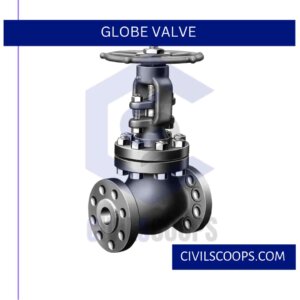
A Globe valve is a linear motion valve that controls, initiates, and stops the flow of the water. In this valve disc moves perpendicular, when it totally opens then water flows completely and when it’s closed then water can not flow.
The leakage of the globe valve is less than the gate valve because here perpendicular disc action is spotted and the disc creates a tight seal with the seat ring.
2.1 Type of Globe Valve
There are generally three types of globe valve spotted, are the following-
- Z-type Globe Valve:
- Y-type Globe Valve:
- Angle-type Globe Valve:
2.1.1. Z-type Globe Valve:
This type of valve is the simplest type and circular body. It has horizontal seating access which has to move the disk in a perpendicular direction. The seat of the valve is easily accessible. This type of valve is required in those places where pressure drop is not observed and throttling is required.
2.1.2. Y-type Globe Valve:
This type of valve is required where a higher pressure drop is observed. Here, the stem and seat are inclined at 45 degrees to the axis. This type of valve is used in those places where high pressure and pressure drop are concerned.
2.1.3. Angle-type Globe Valve:
This type of valve can change the direction of flow to 90 degrees without the help of an elbow or any other extra appliances. These are generally used in fluctuating conditions.
2.2. Globe Valve Types Based on Body Bonnet Connection:
Here, the different types of globe valve are as follows.
2.2.1. Globe Valve: Screwed Bonnet
It is easy to design and it is used for inexpensive works.
2.2.2. Globe Valve: Bolted Bonnet
It is used in a maximum number of gate valves. It requires a seal at the joint between the body and the bonnet.
2.2.3. Globe Valve: Welded Bonnet
Welded bonnet is one of the popular types of connection and it is lighter than bolted bonnet connection.
2.2.4. Globe Valve: Pressure-sealed Bonnet
This type of system is very much useful for high temperature & high pressure.
Application of Globe Valve:
Here, the list application of globe valve are as follows.
- This valve is generally used in high-point vents or low-point drums.
- This type of valve is used in those places pressure drop is not a problem like feeding water, lubricating oil, chemical, air, etc.
- This valve can be also automatic but in that case, the valve should be smooth instead of threaded.
Advantages of Globe Valve:
Here, the list advantges of globe valves are as follows.
- It has a better capacity to close the liquid.
- The repair works are easy because it is accessible from the top.
- It can be operated automatically.
Disadvantages of Globe Valve:
Here, the list disavantges of globe valve are as follows.
- A huge amount of head loss will be there if there are two or more right-angle bends.
- Obstructions and the discontinuity of the flow path can create a major amount of head loss.
- In a high-pressure line, there is a major chance of internal damage.
- When the valve is large then it requires power and it also creates noise.
- It is costlier and heavier than any other valve of the same rating.
3. Check Valve
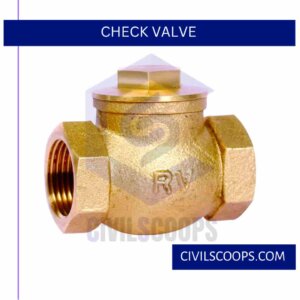
The check valve is a type of valve which is installed in the plumbing system to prevent the backflow of water. A check valve is also known as a non-return valve.
Types of Check Valve
There are generally eight types of valves used in the plumbing system, those are the following-
- Swing type
- Tilting disk
- Piston type
- Lift type
- Ball type
- Stop check valve
- Dual plate type
3.1. Swing Check Valve
This type of valve is interlocked and they close or open completely. This type of valve operates when there is a flow and stops totally when there is no flow.
In this valve, turbulence and pressure drop is very low. This is made of metal to metal. Here, seat angles are generally 5 to 7 degrees. If we use a larger seat angle then it reduces the chances of disc travel, water hammer, etc.
The swing type of valve allows the flow of water when it’s full fledge and close automatically when the pressure reduces. This type of valve consists of the valve body, disc, and bonnet.
3.2. Tilting Disc Check Valve
A tilting disc is a modern type of valve which is a tilted disc design, easy to open or close the valve. This type of valve has a dome-shaped disc which enables the flow of water on both sides of the disc.
The disc closes automatically by the spring force when the flow of the liquid is reduced.
3.3. Ball Type and Plug Type
This is similar to the globe-type valve which is perfect at high-pressure flows i.e. where the fluid pressure is high. The disc goes upward direction when the flow starts and when the flow of the liquid stops then the disc goes down due to gravity. It is generally used to control the flow of water.
This type of valve provides a better leakage check option and it allows the flow of water when the pressure of the liquid is higher. This type of valve works with the gravity principle.
3.4. Dual Plate or Dual Disk Check Valve
A dual plate valve is well known as a butterfly check valve. This type of valve is used in low-pressure liquids or gaseous transportation.
A dual plate valve is an 80 to 90% more lightweight than ordinary check valves; so, it reduces the overall weight of the structure. Installation and maintenance of this valve are lower than other types of valves.
3.5. Stop Check Valve
This is a type of valve which is a mixed combination of globe valve and check valve. It acts dual character like a stop valve or check valve. The stop check valve can be closed by using a stem.
Also Read: What Is Soundness of Cement Test
4. Plug Valve
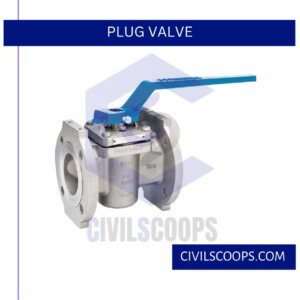
This is another type of valve which has a quarter-turn rotary motion. It provides a bubble-tight shut-off. A plug valve is used for vacuum at high temperatures.
Types of Plug Valves
Here, different types of plug valves are as follows.
4.1. Lubricated Plug Valve:
This type of valve has a cavity along its axis. This type of fitting prevents the flow of sealant in the reverse direction. The plug surface is always lubricated by the sealant. Lubrication of the valve generally helps to easy transition of the valve. This type of valve is used for high-pressure temperature services and provides better corrosion-resisting service.
4.2. Non-lubricated Plug Valves:
In this type of valve a non-elastomeric sleeve is used. It reduces friction activity between the body and the sleeve. This valve is not used in higher temperatures because it is made of non-metal substances.
5. Ball Valve

A ball valve is also a quarter turn rotary type valve where a ball is attached to the system to shut down the flow of the water. It allows the flow when the ball stands in a port line and when you turn the ball in a 90-degree rotation then it stops the flow of the water.
This type of valve action is very quick but sometimes it needs a small hand well to operate large ones.
Types of Ball Valve Used in Piping
There are generally 6 types of ball valves present in the piping, those are the following-
- Trunnion Mounted type
- Floating type
- 3 Way
- Top Entry type
- Side Entry or Split Body type
- Three Piece Body type
5.1. Trunnion Mounted Ball Valve
When the torque is higher then we use a trunnion-mounted ball valve. The cost of this system increases if the flow pressure increases.
5.2. Floating Ball Type
- In this type of valve system, two elastomeric systems.
- The stem of the ball is attached at the top of the slot and it allows the ball to start the quarter turn.
- A shaft is used to give access to lateral movement.
- This type of valve is difficult to control when the upstream pressure is too high.
5.3. Three-Way Ball Valve
According to the requirement, you can adjust the 3-way system, like-
- One inlet and two outlet
- An inlet and an outlet changing a flow
- Straight pass fluid without inlet
- This type of valve fixes in independent float or at the body of the valve.
6. Butterfly Valve
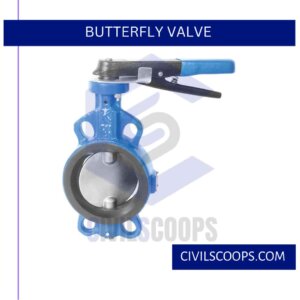
This valve is also a quarter-turn rotary valve, generally used to start, stop or regulate the flow of the liquid. These valves are generally used in large applications because of their compact design and lightweight structure.
Types of Butterfly Valves
There are different types of butterfly valves there, those are in the following-
- Water Type Ends
- Fanged Ends
- Lug Type Ends
- Zero Offset Butterfly Valve
- Butt Welded Type Ends
- Double Offset Butterfly Valve
- Triple Offset Butterfly Valve
6.1. Water Type Ends:
A water type valve is placed between pipe flanges and valve body. It can not use as an isolation valve but it is easy to install.
6.2. Fanged Ends:
It is another type of valve which connects with the flange dimensions of the pipe.
6.3. Lug Type Ends:
A number of lugs are connected at the periphery of the body and bolt holes help to coincide with the flange.
6.4. Zero Offset Butterfly Valve:
This type of valve is used in low-pressure and low-temperature appliances. Here, the disk helps to divide the flow of water into two parts, and friction is observed at the disk; so, head loss will be observed.
6.5. Butt Welded Type Ends:
It is used in high-pressure service.
6.6. Double Offset Butterfly Valve:
In this type of valve, the friction force is very less because friction is only applicable at the opening time.
6.7. Triple Offset Butterfly Valve:
This type of valve is like a geometrical shape with a right-angled cone shape. So, it provides a frictionless service.
7. Needle Valve
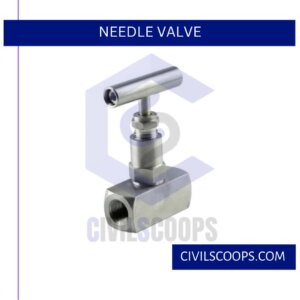
The needle valve is similar to the globe valve but the tone difference is it has a sharp needle. This type of valve provides a precious flow in the very small piping system.
The needle valve is a manual type valve that needs all-time throttling for flowing water. The liquid only flows through the valve when it is set at 90 degrees. In this system, we can gradually increase or decrease the system flow.
The needle valve is made of metal like forged steel or stainless steel, it depends on the requirement of the work. The seat of this valve is made of composite metal and it is used in smaller size piping where a socket or weld is used.
8. Pinch Valve
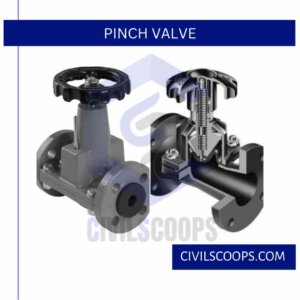
A pinch valve is another type of valve which is also widely known as a clamp valve. It is a linear action valve that is used to start, stop or regulate the liquid.
The main mechanism of this valve is it uses a rubber tube which is known as a pinch tube to control the flow of fluid. A pinch valve is generally used for conveying slurry, higher amounts of suspended solids, liquids, etc.
This type of valve is the simplest form of piping valve. There are two types of pinch valves are used, those are open type and completely closed type.
9. Pressure Relief Valve

A pressure relief valve is widely known as a pressure protection valve that maintains the inward pressure of the piping system.It releases the pressure by measuring with pre-set pressure limit.
There are generally 6 types of pressure relief valves observed, those are the following-
- Recycling Type Pressure Relief Valve
- Non-Recycled Type Pressure Relief Valve
- Pressure Relief Valve
- Vacuum Relief Valve
- Pressure Vacuum Relief Valve
- Safety Relief Valve.
[su_box title=”FAQ” style=”default” box_color=”#333333″ title_color=”#FFFFFF” radius=”3″ class=”” id=””]
What Is a Plumbing Valve?
A valve is a type of fitting that allows for regulation, control, and direction of fluids passing through a pipe. Valves are commonly used to direct flow, shut off water access, prevent backflow, and adjust water pressure within a system.
What Is a Check Valve in Plumbing?
Check valves are generally installed in pipelines to prevent backflow. A check valve is basically a one-way valve, in which the flow can run freely one way, but if the flow turns, the valve will close to protect the piping, other valves, pumps etc.
What Is a Gate Valve in Plumbing?
A gate valve is the most common valve for water supply systems. It represents a linear-motion isolation valve and has a function to stop or allow the flow. Gate valves got their name from the closure element sliding into the flow stream to provide shutoff and, therefore, acting like a gate.
What Is a Ball Valve in Plumbing?
Ball valves, also called shut-off valves, tend to be found in newer homes. Ball valves use a handle to control the placement of a hollow, perforated sphere in the mechanism. When the handle is turned, the hole immediately opens or closes the water flow.
What Is a Water Valve?
Water valves regulate the flow and temperature in pipes and plumbing fixtures. When they are installed and operate properly, the valves control constant flow and volume. Materials used for water valves include brass, plastic, stainless steel, bronze, cast iron and galvanized pipe.
What Is a Water Pressure Regulator?
A water pressure regulator is a plumbing valve that reduces the water pressure coming from the main water line into the house. This valve brings down the pressure to a safe level before the water reaches any plumbing fixtures inside the home.
What Is a Compression Valve?
A compression or multi-turn valve is a type of valve that opens and shuts after multiple turns. The compression valve has a rubber seal at the bottom of the stem. The stem is attached to the handle. Once the seal connects with the base of the internal seat, the valve shuts off the flow of fluid within the system.
What Is an Isolation Valve in Plumbing?
An isolation valve is a valve in a fluid handling system that stops the flow of process media to a given location, usually for maintenance or safety purposes. They can also be used to provide flow logic (selecting one flow path versus another), and to connect external equipment to a system.
What Is Angle Valve in Plumbing?
Angle valves are used to control the flow of water from faucets under kitchen and bathroom sinks. Under geysers, separate angle valves are fitted for hot and cold water flow. Angle valves are also located in the toilet seat sections, to which pipes or health faucets are connected to create the jet sprays.
What Is a Balancing Valve in Plumbing?
Balancing valves are throttling devices designed to regulate the fluid flow through hydronic components. In hydronic systems (HVAC systems that use water as a medium to heat and cool areas of the facility), they facilitate the distribution of heated or chilled water to all terminals.
What Is a Non Return Valve Plumbing?
A non-return valve allows a medium to flow in only one direction and is fitted to ensure that the medium flows through a pipe in the right direction, where pressure conditions may otherwise cause reversed flow.
What Is a Hammer Arrestor Valve?
Water hammer arresters are simple devices that install within the water line to a specific fixture or appliance. Arresters absorb the shock wave created by a sudden stoppage of the water flow.
What Is an Eccentric Plug Valve?
A style of rotary control valve with a plug-shaped, flow-restricting member that follows an eccentric path as it rotates. The plug has no contact with its seat until it turns within a few degrees of the shutoff position.
Types of Plumbing Valves and Their Uses
- Gate Valve: Gate valve is the most widely used type of valve in plumbing systems.
- Butterfly Valve: This valve has a rotating metal disc that allows and inhibits the water flow, creating an image similar to that of a butterfly due to which is called a butterfly valve.
- Ball Valve.
- Globe Valve.
- Pressure Relief Valve.
[/su_box]
[su_note note_color=”#F2F2F2 ” text_color=”#333333″ radius=”3″ class=”” id=””]
Like this post? Share it with your friends!
Suggested Read –
- All About Energy-Efficient Homes
- Commercial Building Roof Types | What is Commercial Building Roof
- All About Bathroom Accessories | 28 Different Types of Bathroom Accessories
- What Is Sewage Pump | Types of Sewage Pump | Advantages and Disadvantages of Sewage Pump
- All About Roof Overhangs | 10 Various Types of Roof Overhangs | Standard Roof Overhangs | Overhang Roof Design | Roof Overhangs on Houses
[/su_note]
Originally posted 2023-04-18 06:29:30.
